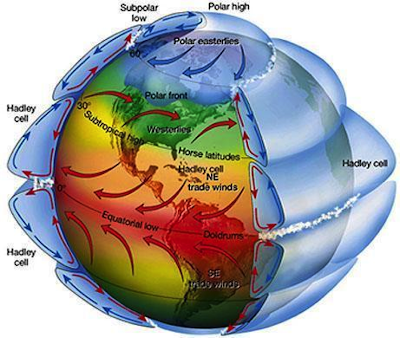Introduction
Have you ever had to worry about what was in your food? How would it make you feel if your community was historically very healthy and then over the course of your life, more and more infants and children were getting sick? How is the Arctic connected to the global cycling of pollutants?
Each of the individual research categories (Mercury, Persistent Organic Pollutants (POPs), Microplastics, and Black Carbon) are global issues, but they also have direct impacts on local communities living throughout the Arctic. Mercury, POPs, and Microplastics are usually released from lower latitudes and concentrate in the Arctic. They are also all persistent pollutants, so their impacts last for tens of years. Black Carbon is an issue around the world, but with increased use of the Arctic, more and more Black Carbon is being released onto ice, which decreases albedo and contributes to global warming. This global warming then releases more and more of the persistent pollutants that had once been trapped in ice and snow pack. As these pollutants are released into the environment, each have specific detrimental impacts on human health. In the Arctic, indigenous communities face a disproportionate burden of these pollutants’ adverse health effects. Therefore, cleaning up the Arctic is necessary to ensuring the health and safety of communities throughout it.
Important background information about the Arctic (Maps, general facts, etc.)
 Currents (water)
Currents (water)
- Fram Strait: There are two main ocean currents in Fram Strait
- One is called West Spitsbergen Current (WSC) and the other is called East Greenland Current (EGC). WSC carries Atlantic waters into the Arctic Ocean, and the EGC transports sea ice south out of the Arctic basin.
- Fram Strait: There are two main ocean currents in Fram Strait
- Currents (air)
- As a mechanism to control global temperatures, air naturally circulates around the Earth, bringing warmer air to colder regions.

- With it, the warmer air from lower latitudes bring pollutants to higher latitudes.
- Any persistent pollutants released north of the equator will most likely end up in the Arctic, and any persistent pollutants released south of the equator will most likely end up in the Antarctic.
- This transport mechanism, however, does not work in the other direction as at high latitudes, the environment is so cold, that it acts a sink, keeping pollutants in the Arctic at higher concentrations than in other places around the world.
- As a mechanism to control global temperatures, air naturally circulates around the Earth, bringing warmer air to colder regions.
Important concepts or terms that readers might encounter throughout the website.
- Bioaccumulation: the gradual accumulation, such as chemicals or toxins, in an organism.
- Speciation: describes the different forms an element takes in the environment.
- Persistent Organic Pollutants: Persistent organic pollutants are chemicals that do not easily break down in the environment from natural processes. These pollutants will exist in the arctic ecosystem and environment for years, if not longer. There are many different kinds of POPs in the Arctic including DDT, PCBs, and HCBs.
- Traditional Food vs. Imported Food: Traditional Foods are foods that have been historically consumed by Arctic communities. These include whale, caribou, and narwal. Imported Food is food that is made elsewhere and shipped to the Arctic as an alternative food source. These include processed food, cured meats, and wheat bread.
- Arctic Amplification: Arctic amplification is the process in which chemicals or elements released around the world get transported through ocean and air currents to the Arctic. These chemicals, while not emitted from the Arctic region, then accumulate. Hence, the chemicals’ impacts are amplified.
- Microplastics: plastic particles that are smaller than 5 millimeters.
- Albedo: the amount of sunlight that is reflected by the surface that ranges between the value of 0 and 1. Lower Albedo (closer to 0) means that the surface is absorbing a lot of light and higher albedo means that the surface is reflecting a lot of light.
- Greenhouse effect: A mechanism driving global climate warming, in which the presence of greenhouse gases (GHGs) in the atmosphere (including CO2 and methane) absorb short wave radiation, and re emitting heat energy, gradually warming the atmosphere.
How to navigate the Arctic Issues and Policy Ideas tab.
There are four different sub-tabs within the Arctic Issues and Policy Ideas tab. Each of these sections covers one of the four different regional environmental challenges that include: POPs, Microplastics, Mercury, and Black carbon. Each tab includes a research presentation (video) and information that introduces a detailed explanation of the issue itself, one policy effort to address the issue, and two to three policy proposals.
